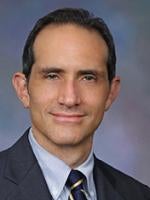Pharmaceutical and device companies, financial institutions, government contractors, oil and gas conglomerates, and other public and private entities continue to be in the crosshairs of aggressive federal government regulatory enforcement efforts. At the same time, private plaintiff whistleblowers (and their specialized counsel) continue to tap into the US Department of Justice's (DOJ) deep resources to reap the rewards of these enforcement efforts. The False Claims Act (FCA) remains one of the most powerful weapons in this enforcement arsenal, allowing the government (and whistleblowers and their counsel) to recover treble and statutory penalties from defendants who are found liable for making fraudulent claims to the government. The FCA applies to a broad array of government programs and contracts.
The dollars collected by the government and private plaintiffs through these actions remain staggering. Indeed, the DOJ recently reported that recoveries in FCA civil actions have steadily risen in each of the past three years, setting a new high-water mark for settlements and judgments: $4.9 billion in 2012, $3.8 billion in 2013 and a record-breaking $5.69 billion in 2014. The steady increase in FCA filings over the past five years (more than 800 new cases were filed in fiscal year 2014) suggest that this trend is not likely to end anytime soon. As these enforcement and collection efforts continue across industries, it remains critical that the corporate subjects (and executives) of these investigations be armed with defenses and best strategies to limit the government's reach.
Limiting damages is one such strategy, and the recent US Court of Appeals for the Sixth Circuit decision in United States v. United Technologies, No. 13-4057 (6th Cir. April 6, 2015) highlights that there indeed are limits to the government's FCA dip into company pockets. In United Technologies, the Sixth Circuit threw out a $657 million treble damages award to the government. The case concerns a supply contract for fighter engine jets awarded more than 30 years ago. After 17 years of litigation, the appeals court held that the government could only recover (and treble) its actual damages defined by the amount the government paid above the fair market value of what it received.
For many years, defendant Pratt & Whitney (P&W), then a division of defendant United Technologies, was the exclusive supplier of F-15 and F-16 jet engines to the US Air Force. In 1982, in an effort to ensure that it was getting competitive pricing, the Air Force implemented a fighter engine competition for a six-year fighter engine supply contract. The only competitor besides P&W was General Electric (GE). In an effort to remain the sole supplier to the Air Force, P&W submitted a bid that relied on inflated cost estimates in conjunction with a volume discount to undercut GE's bid. The Air Force initially questioned the accuracy of P&W's quoted costs, but accepted P&W's revised bid, which also falsely certified that it "reflect[ed] [P&W's] best estimates and/or actual costs." At first the Air Force split the contract in year one, granting 25 percent of the engines to P&W and 75 percent to GE. The Air Force later added a "call for improvement" to the competition, however, which allowed P&W to update and improve its existing "best and final offer" before the start of the second and each subsequent contract year. The Air Force accepted P&W's revised, lower prices and awarded P&W a larger percentage of the engines. By the final year of the contract, P&W won nearly two-thirds of the work.
P&W's fraudulent initial cost estimates were not discovered until a 1989 audit, which was completed after the six-year contract ended. Since then the parties have been in litigation. First, the Air Force brought an administrative action before the Armed Services Board of Contract Appeals, which found that even though certain aspects of P&W's initial bid were false, the Air Force had not suffered any damages. The board reasoned that P&W's fraud had not increased the amount the Air Force paid for the engines due to the competitive bidding process. The Air Force did not appeal that determination but, in 1999, it commenced an FCA action in federal court. After a bench trial, P&W was found liable, but the US District Court for the Southern District of Ohio also found nodamages were due and awarded only statutory penalties of $7 million. The district court rejected the government's theory of damages, which equated each dollar of P&W's fraudulently inflated cost estimates with a dollar of damage. The district court also concluded that P&W's fraudulent bid did not affect the contract awarded the first year, and that the "call for improvement" bidding process offset P&W's earlier cost misstatements in subsequent contract years.
On the first appeal, the Sixth Circuit vacated the district court's no-damages determination and sent the case back to the district court with instructions to consider a number of factors in the damages calculation. Principal among those factors was whether the government paid above "what it should have paid for what it received" in terms of fair market value. But on remand, the district court adopted wholesale the government's theory of damages, awarding the government $657 million in treble damages and restitution, plus prejudgment interest.
On the second appeal, the Sixth Circuit found that the district court had gone too far in the opposite direction and erred by accepting the government's damages claims without considering fair market value—the "only benchmark consistent with [the] benefit-of-the-bargain theory of damages" at issue. The district court also came under criticism for failing to give adequate consideration to GE's contract prices and the effect of the continuous bidding process on P&W's contract offers. The Sixth Circuit noted that a "comparable sales analysis has long been and remains the preferred method of establishing . . . fair market value." Ultimately, the Sixth Circuit deferred to the district court to decide whether the government should get a third opportunity to show that it suffered actual damages.
The saga of United Technologies may not yet be over, but the case certainly illustrates the potential benefit of looking beyond defenses to liability, and taking on the government's often aggressive damages theories in FCA actions. There may be several lines of defense available to an FCA defendant that can be developed during the course of litigation, including arguments about the straightforward contract measure of damages.






 />i
/>i

